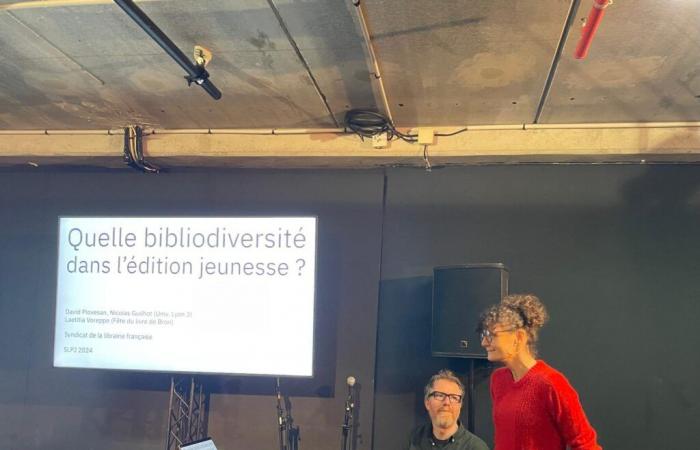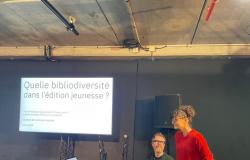
While the 40th edition of the Montreuil Book and Youth Press Fair (SLPJ) welcomed its first visitors on Wednesday, November 27, including a good number of schoolchildren, professionals headed more towards the Interprofessional and International Forum. New to the show, the space gave rise to the round table “What bibliodiversity in children’s publishing?” “. A broad question to which two researchers from the University of Lyon 3, Nicolas Guilhot et David Piovesonattempt to answer in an ongoing study, carried out with the Syndicat de la livre française (SLF).
“Bibliodiversity takes up the idea of biodiversity applied to books and therefore presupposes cultural diversity in the editorial offering”, first recalled Nicolas Guilhot, present alongside Laëtitia Voreppe, youth programmer for the Bron Book Festival (Auvergne-Rhône-Alpes). Despite the difficulty in assessing the reality of the concept in an environment mixing art and economics, the researcher is unequivocal. According to him, the first results of the study, carried out on a panel of around 450 independent bookstores, reveal an undeniable concentration of sales in the hands of a handful of large publishing houses.
“The big publishers are getting bigger and bigger”
Coming from the French Bookstore Observatory and the Exhaustive Book File (FEL, tool of the National Publishing Union), the data also show, and paradoxically, an increase in the number of publishers, from 1,301 in 2017 to 1828 in 2023. “In short, the big publishers are getting bigger and the smaller ones are getting smaller and smaller,” summarized Nicolas Guilhot, highlighting the abundant initiatives on the micropublishing side.
For the researcher, a market « parfait », lacking editorial concentration, should only have 20 editors. However, today, the ten largest children’s publishers account for 50% of overall sales. “It is a phenomenon which is undoubtedly accentuated by the formation of large editorial groups”added the expert. In total, 55% of market sales are made by the top four publishing houses, according to the orders of magnitude communicated by the National Book Center (CNL) during hearings before the Senate last May.
A monopoly situation?
The phenomenon is even more marked on the distributor side since the five biggest players account for 93% of sales. “We therefore have a monopoly situation, especially since some of these distributors are owned by large publishers,” detailed Nicolas Guilhot. Quid smaller publishers, like Thierry Magnier, Fourmis rouge or l’Étage du bas, whose production is regularly associated with an editorial alternative?
“Some of them are in the 25% that sell the most. Statistically, they are therefore drowned in the middle of other publishers who cannot be said to embody bibliodiversity”explained the researcher. And this, even if some of them, such as The City is Burning“participate actively, through their committed titles, in this notion of bibliodiversity”, added Laëtitia Voreppe.
Added to this first phenomenon is that of “bestsellerization”, i.e. the concentration of sales on a small number of works, which also tends to weaken the balance of truly effective bibliodiversity. “In youth, 10% of the best-selling titles represent 64% of sales. This is 5.5% more than in 2017, which means that this concentration in this small number of references is increasing, even on a small time scale. illustrated Nicolas Guilhot.
Revaluation of funds
“Even if post-pandemic, publishers have started work on sustainability, via a reduction in titles in the catalogs, the feeling of a tidal wave is still very present for the bookseller”underlined Laëtitia Voreppe. According to the results obtained by the researchers, there is therefore concentration within concentration with 10% of the best-selling titles being sold by 12% of publishers. In reaction to this difficult-to-treat flow, the Association for Book Ecology had also called, between January and June 2024, for a “a truce of novelties for booksellers”.
Nevertheless, it seems that children’s publishing has managed to maintain the attractiveness of the catalog collection, a significant criterion for a “good student” of bibliodiversity. “Even in September and at Christmas, two periods of publication of new products, the new products do not overwhelm the fund titles, in all the fields observed”said Nicolas Guilhot. Enough to open a new field of reflection on the resistance capacity of independent bookstores in the face of the dynamics of editorial concentration?





